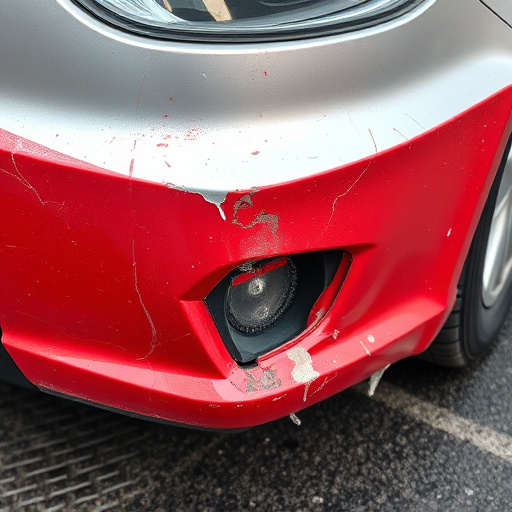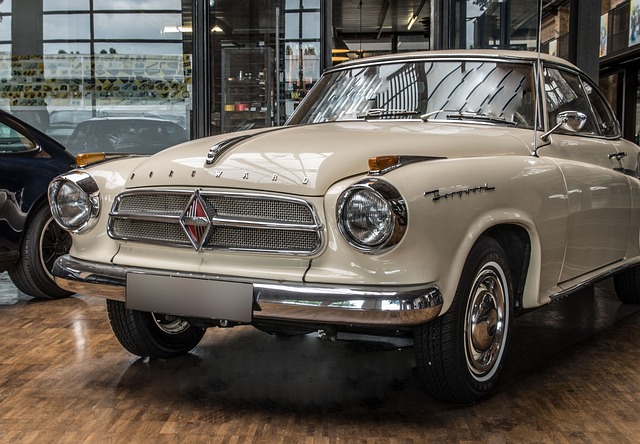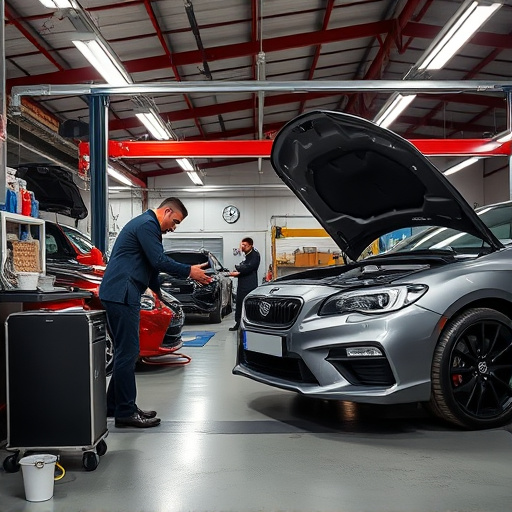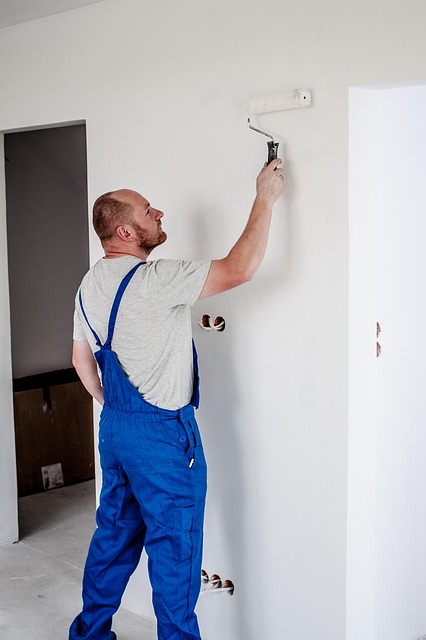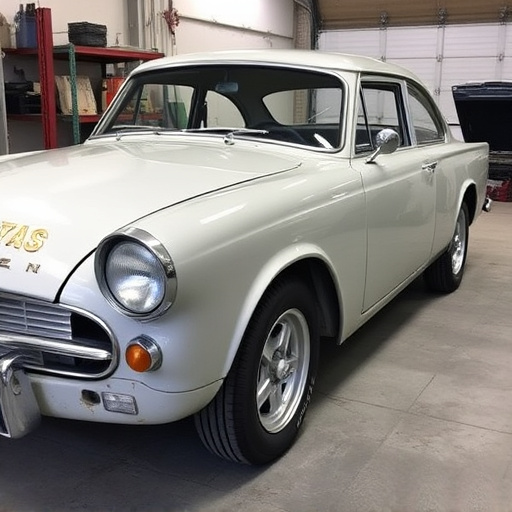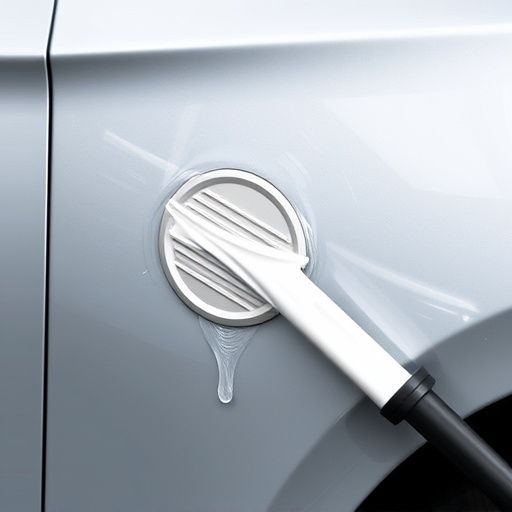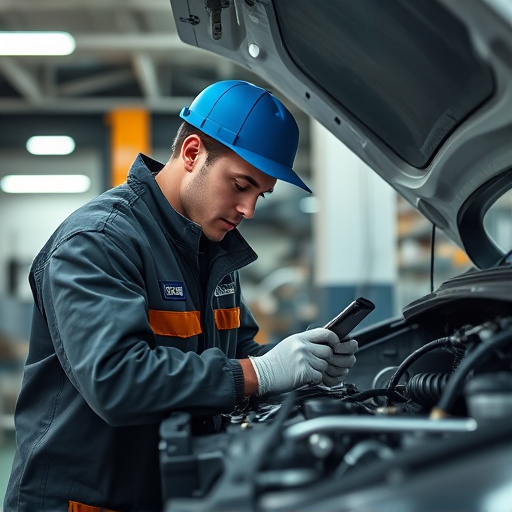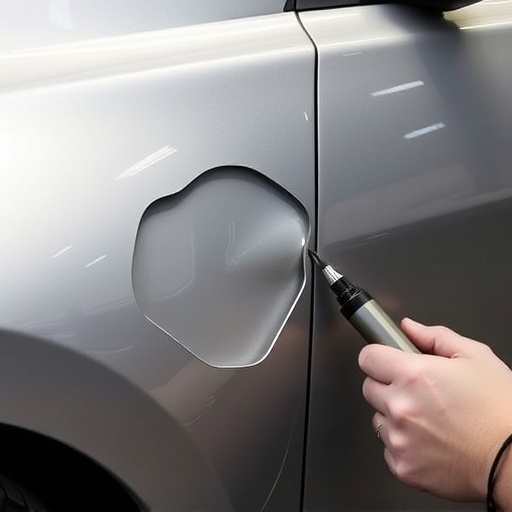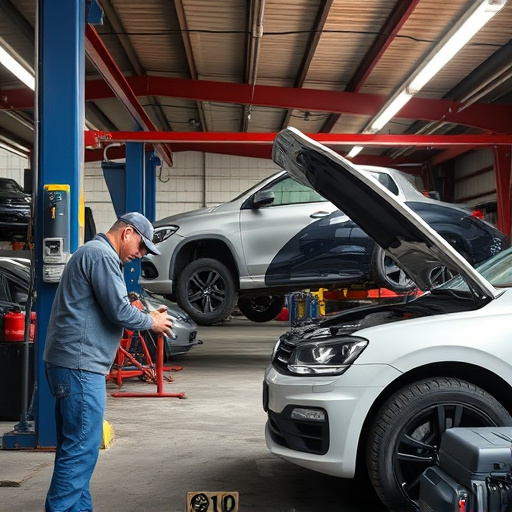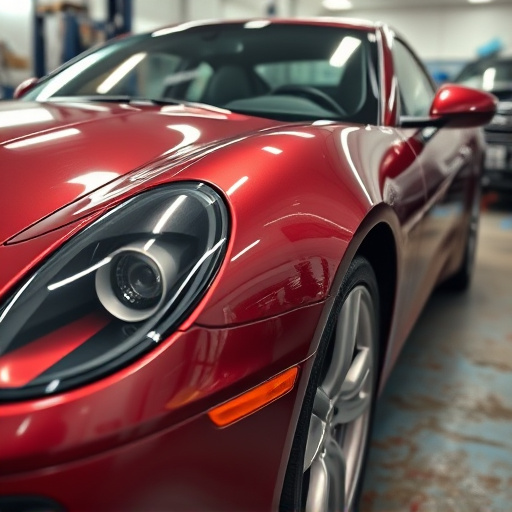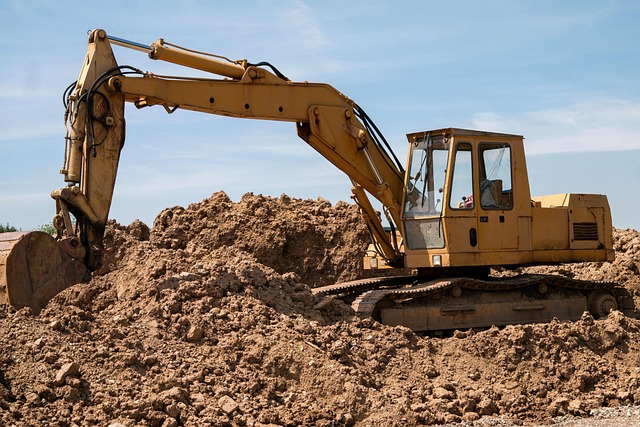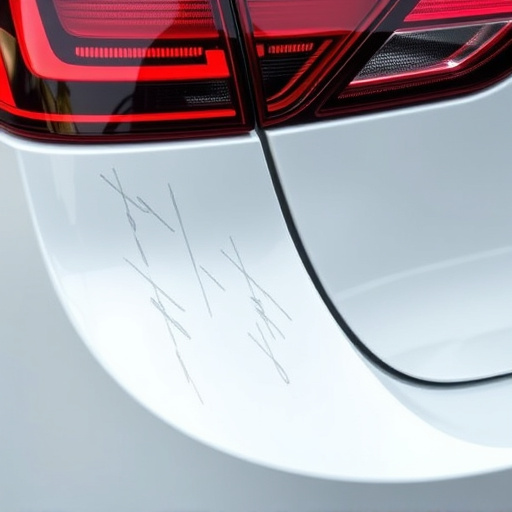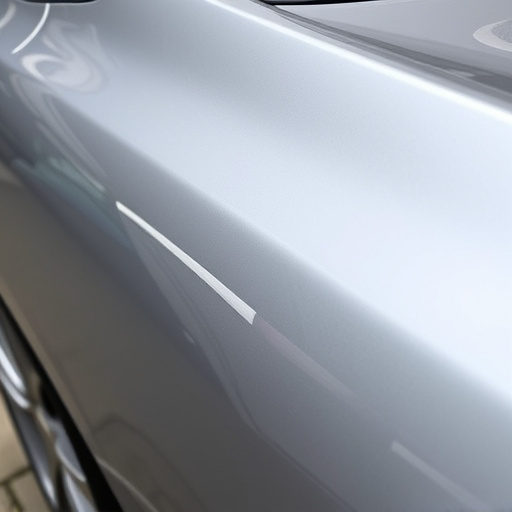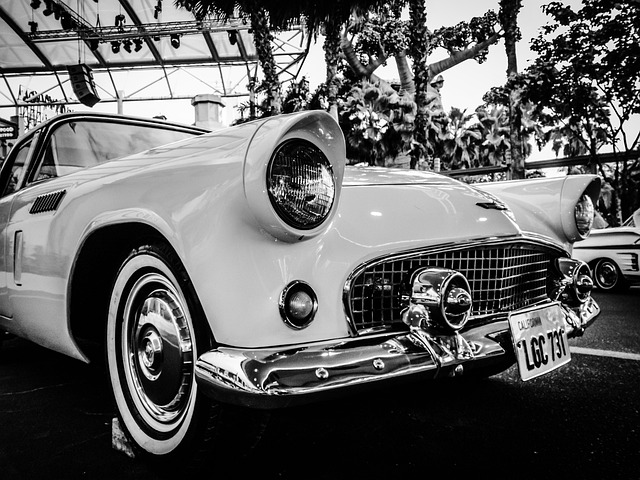Frame straightening is a crucial step in auto body restoration, addressing structural issues and ensuring both safety and quality. Advanced techniques and tools are employed to correct vehicle framework to pre-damage condition, preventing future problems like misaligned panels and uneven paint application. Reputable shops prioritize this meticulous process using state-of-the-art equipment for accurate results, enhancing visual appeal and roadworthiness of restored vehicles.
In the meticulous art of auto body restoration, frame straightening stands as a pivotal process. This article delves into the significance of aligning and repairing vehicle frames, ensuring structural integrity and optimal performance. We explore various techniques employed in auto body restoration, from advanced measurement tools to precision welding. Furthermore, we highlight quality control measures critical for achieving safe and reliable frame correction, offering a comprehensive guide for enthusiasts and professionals alike.
- Understanding the Importance of Frame Straightening
- Techniques Used in Auto Body Restoration Process
- Ensuring Quality and Safety in Frame Correction
Understanding the Importance of Frame Straightening
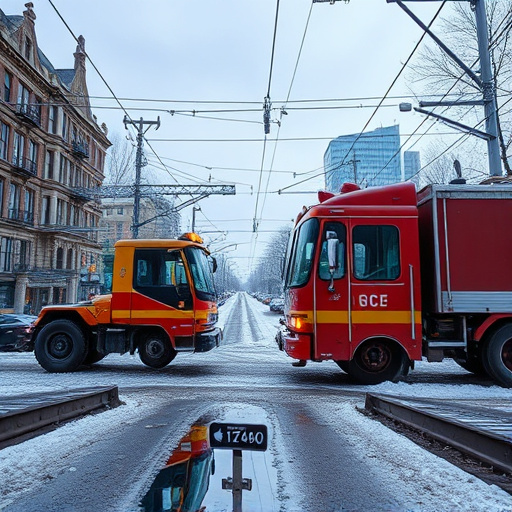
In the intricate process of auto body restoration, frame straightening is a critical step that cannot be overlooked. It involves the careful manipulation and adjustment of a vehicle’s framework to restore it to its original, pre-damage condition. This meticulous process ensures not just cosmetic perfection but also structural integrity—a crucial aspect for safe driving and long-term reliability.
Frame straightening is vital in auto body restoration as it addresses foundational issues that can compromise the car’s overall performance and safety features. Beyond simply fixing dents or scratches, it involves aligning and tightening components like panels, floors, and roof systems. This precision work is essential whether one is dealing with minor fender benders or significant accidents, ensuring that the vehicle returns to its optimal state, making it a key component in professional auto painting and bumper repair services.
Techniques Used in Auto Body Restoration Process
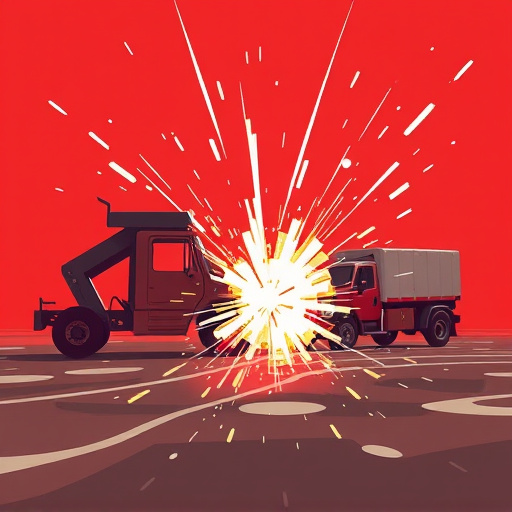
The auto body restoration process involves a meticulous series of techniques to ensure the car’s structural integrity and aesthetic appeal are restored. These methods have evolved significantly over time, with advancements in technology offering more precise and efficient solutions. One common technique is hydroforming, where high-pressure water is used to shape metal panels, allowing for accurate and repeatable results. This process is particularly useful for creating complex curves often found in modern vehicle designs.
Another critical aspect of car body repair is the application of specialized adhesives and sealants. These materials play a vital role in joining panels, ensuring strength and longevity. Modern cars also utilize advanced frame straightening techniques, such as robotic welding and computer-aided measurement systems. These technologies enable precise adjustments, accounting for minimal deviations, resulting in a more seamless final product. Moreover, car paint services often employ computer-generated color matching to achieve an exact match, enhancing the overall restoration quality. Collision repair services also benefit from these innovative techniques, ensuring that vehicles return to their pre-incident condition or even exceed it.
Ensuring Quality and Safety in Frame Correction
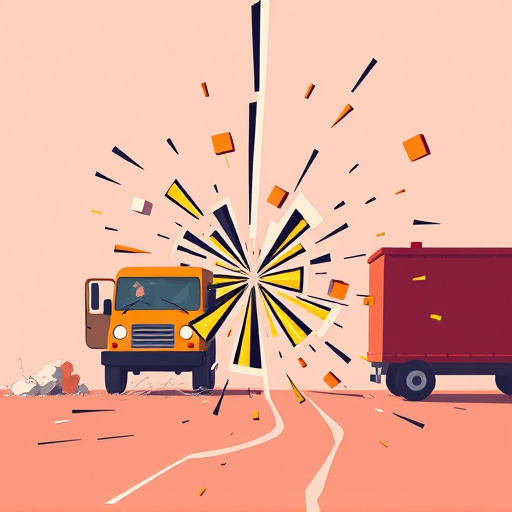
In the meticulous process of auto body restoration, achieving precision in frame straightening is paramount to ensure both quality and safety. It’s not merely about restoring a car’s exterior; it involves realigning the vehicle’s structural framework to its original specifications. This step is critical as even the slightest misalignment can compromise the integrity of the vehicle post-repair, leading to potential hazards during future driving. Skilled technicians employ advanced tools and techniques to accurately measure and correct frame bends, ensuring that every component—from the chassis to the body panels—is restored to its proper alignment.
Proper frame correction is a cornerstone of a quality auto glass replacement or car damage repair process. It prevents issues like uneven clear coat application, misaligned body panels, and structural weaknesses that could compromise the vehicle’s overall performance and safety features. A reputable vehicle body shop prioritizes this aspect, utilizing state-of-the-art equipment to guarantee accurate measurements and precise adjustments. This dedication to detail not only enhances the visual appeal of the restored car but also ensures the long-term reliability and roadworthiness of the vehicle.
Frame straightening is a vital aspect of auto body restoration, ensuring vehicles return to their original structural integrity. By employing advanced techniques and prioritizing quality control, restorers can achieve precise results, enhancing safety and cosmetic appeal. Incorporating these practices into the auto body restoration process guarantees customers receive high-quality repairs that stand the test of time.
